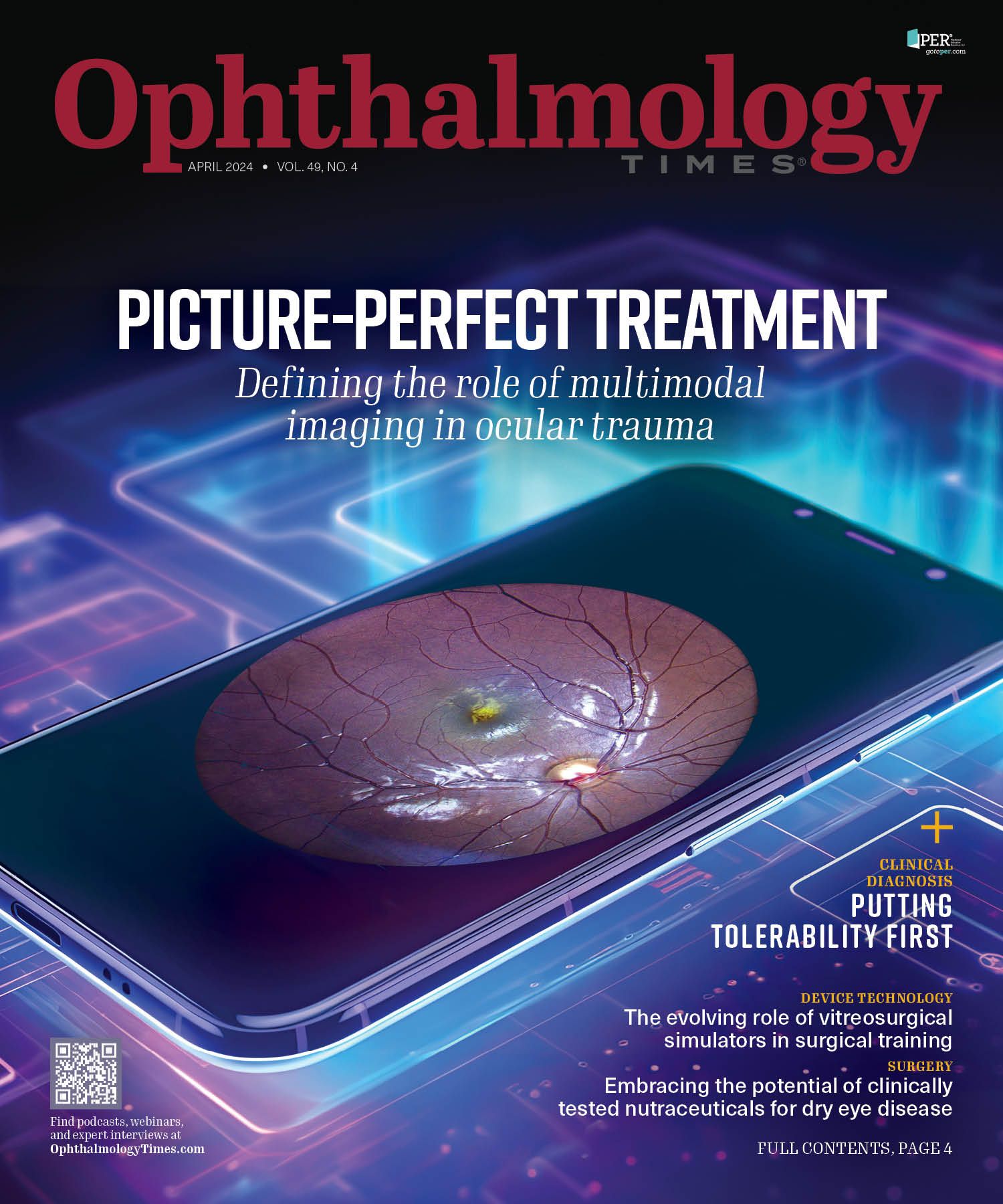Publication
Article
Digital Edition
Gene editing untangles one strand of the AMD web
Author(s):
CRISPR manipulation presents opportunities and challenges.
(Image Credit: AdobeStock/Marharyta)

Genome engineering presents therapeutic avenues for variants of age-related macular degeneration (AMD), according to an investigative team from the Nuffield Laboratory of Ophthalmology and Nuffield Department of Clinical Neurosciences, University of Oxford, in the United Kingdom.
Lead author Ahmed Salman, PhD, and colleagues described the capabilities of manipulating clustered regularly interspaced short palindromic repeats (CRISPR) DNA sequences.1 The enzyme used when manipulating these DNA clusters is known as CRISPR-associated protein 9, or Cas9; the authors explored means of using the CRISPR/Cas system2 for targeting AMD-related single-nucleotide polymorphisms (SNPs) in complement factor genes. SNPs in these genes are targeted via protospacer adjacent motif (PAM) sites.
The retina was an early testing ground for CRISPR editing: Genetic therapy targeting Leber congenital amaurosis was the first-in-human CRISPR gene therapy trial. A range of AMD-associated SNPs have been identified in the complement system, including factor H, factor B, and complement C3 (C3). Additionally, AMD is multifactorial but the complement system is a primary pathway in the disease’s pathogenesis. Investigators reported that genome-wide association studies detected 52 variants independently associated with AMD, and more than one-third of those variants resided in or near a gene of the complement system.1
The authors found that CRISPR manipulation could be effective for treating AMD, as long as allele specificity
was achieved.1
“CRISPR targeting of pathogenic variants with active Cas9 appeals as a promising therapeutic approach since specific knockout of pathogenic AMD SNPs could potentially result in a nonpathogenic variant,” they wrote.
As an example, the authors referenced a study by Hecker et al,3 which assessed a risk variant of AMD in the C3 locus (rs2230199). The analysis showed a trend toward elevated levels of complement activation marker C3a.3 Specific knockdown of the pathogenic (G) allele by random indels, using active Cas9 targeting, would be an “ideal strategy,” though such a level of allele specificity could be difficult. Single-base editing, in which 1 base pair is targeted and specifically replaced with another, is more accurate for editing transition SNPs, but it is not always applicable.
“Activation of the complement system is a dynamic process, and the complement landscape is constantly changing during the different phases of activation,” the authors wrote. “During the acute phase, different complement components are rapidly generated, inactivated and cleared.”
The complement system is versatile, but its complex nature obscures some of the functional implications available to genetic researchers targeting AMD. Researchers also face the challenge of isolating genetic aspects of AMD’s pathogenesis, since environmental and lifestyle factors can play a role.
“Different CRISPR-Cas systems, and various Cas9 strains, can potentially be suitable for different variants depending on the nature of the nucleotide change and the availability of suitable PAM sites,” the authors said. Targeted alleles can be manipulated by indels, single-base editing, prime editing, or epigenetic editing, depending on the proximity of PAM sites.1
“Although the availability of proximal PAM sites within a seeding window for active Cas9 editing suggests the editing of SNPs is viable, achieving allele-specific targeting is rather difficult,” the authors added. Functional CRISPR editing for AMD will be dependent on future research that hones these targeting strategies. Therapeutic applications should also explore methodologies in assessing and identifying AMD variants to determine which patients are candidates for CRISPR editing.
References:
Salman A, McClements ME, MacLaren RE. CRISPR manipulation of age-related macular degeneration haplotypes in the complement system: potential future therapeutic applications/avenues. Int J Mol Sci. 2024;25(3):1697. doi:10.3390/ijms25031697
Xu Y, Li Z. CRISPR-Cas systems: overview, innovations and applications in human disease research and gene therapy. Comput Struct Biotechnol J. 2020;18:2401-2415. doi:10.1016/j.csbj.2020.08.031
Hecker LA, Edwards AO, Ryu E, et al. Genetic control of the alternative pathway of complement in humans and age-related macular degeneration. Hum Mol Genet. 2010;19(1):209-215. doi:10.1093/hmg/ddp472






.png&w=3840&q=75)



























